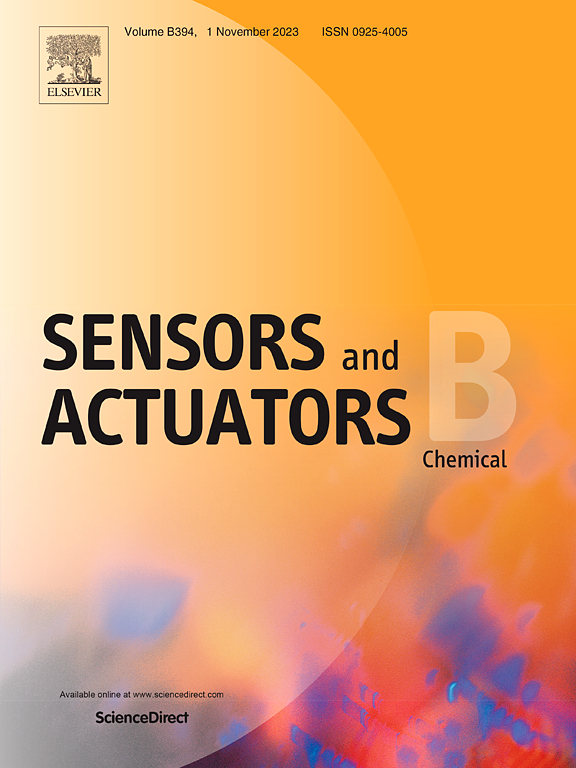Synergistic effects of Au nanoparticles in SmFeO3-based p-type semiconductors for ethanol and toluene detection
IF 8
1区 化学
Q1 CHEMISTRY, ANALYTICAL
引用次数: 0
Abstract
This study investigates the synergistic effects of integrating gold (Au) nanoparticles into SmFeO3-based p-type semiconductors for detecting volatile organic compounds (VOCs), specifically ethanol and toluene. The incorporation of Au nanoparticles significantly enhances the sensor's selectivity and sensitivity toward ethanol, primarily due to strong adsorption and catalytic oxidation processes at the Au-SmFeO3 interface. X-ray photoelectron spectroscopy (XPS) analysis reveals that increasing Au content enhances the excess amount of lattice and adsorbed oxygen species at the SmFeO3 surface. Scanning electron microscopy (SEM) analysis reveals the uniform distribution of Au nanoparticles on the SmFeO3 surface. Using the density functional theory (DFT) calculations, the adsorption of ethanol is stronger at the SmFeO3 surface while that of toluene is slightly weaker at the SmFeO3 surface than the Au surface. Especially, the Au-SmFeO3 interface is a strong binding site for ethanol, which can facilitate sensor detection. In addition, migration of O atoms is much more facile at the Au surface, indicating that oxygen species migrate from the Au surface to the three-phase interface to enhance the oxidation of VOCs. These findings underscore the potential of the Au-SmFeO3 composite as a highly selective material for ethanol detection in VOC sensing applications.
金纳米粒子在smfeo3基p型半导体中用于乙醇和甲苯检测的协同效应
本研究探讨了金(Au)纳米颗粒集成到smfeo3基p型半导体中检测挥发性有机化合物(VOCs),特别是乙醇和甲苯的协同效应。Au纳米颗粒的掺入显著提高了传感器对乙醇的选择性和灵敏度,这主要是由于Au- smfeo3界面上的强吸附和催化氧化过程。x射线光电子能谱(XPS)分析表明,Au含量的增加增加了SmFeO3表面多余的晶格和吸附氧的数量。扫描电镜(SEM)分析表明,金纳米粒子在SmFeO3表面分布均匀。利用密度泛函理论(DFT)计算,乙醇在SmFeO3表面的吸附较强,而甲苯在SmFeO3表面的吸附略弱于Au表面。特别是,Au-SmFeO3界面是乙醇的强结合位点,可以方便传感器检测。此外,O原子在Au表面的迁移更容易,表明氧从Au表面迁移到三相界面,从而增强了VOCs的氧化。这些发现强调了Au-SmFeO3复合材料在VOC传感应用中作为乙醇检测高选择性材料的潜力。
本文章由计算机程序翻译,如有差异,请以英文原文为准。
求助全文
约1分钟内获得全文
求助全文
来源期刊

Sensors and Actuators B: Chemical
工程技术-电化学
CiteScore
14.60
自引率
11.90%
发文量
1776
审稿时长
3.2 months
期刊介绍:
Sensors & Actuators, B: Chemical is an international journal focused on the research and development of chemical transducers. It covers chemical sensors and biosensors, chemical actuators, and analytical microsystems. The journal is interdisciplinary, aiming to publish original works showcasing substantial advancements beyond the current state of the art in these fields, with practical applicability to solving meaningful analytical problems. Review articles are accepted by invitation from an Editor of the journal.
 求助内容:
求助内容: 应助结果提醒方式:
应助结果提醒方式:


